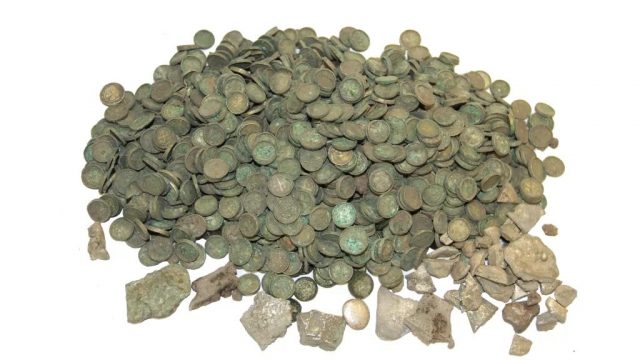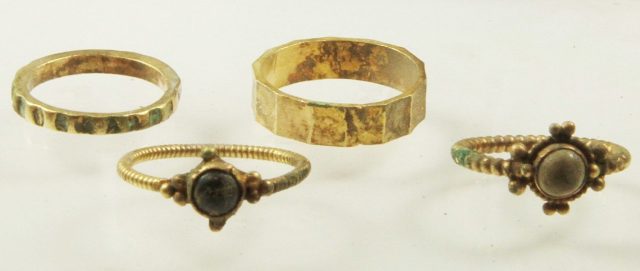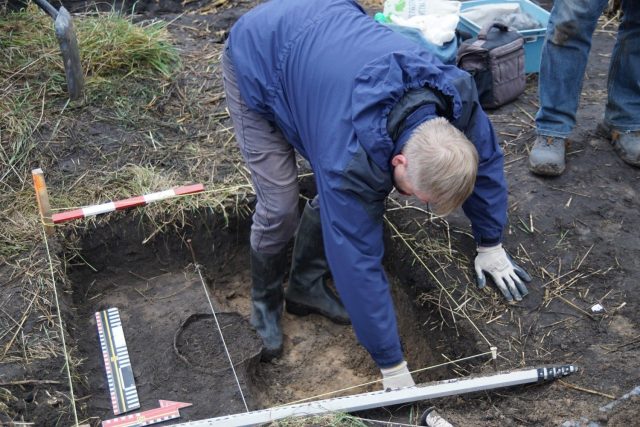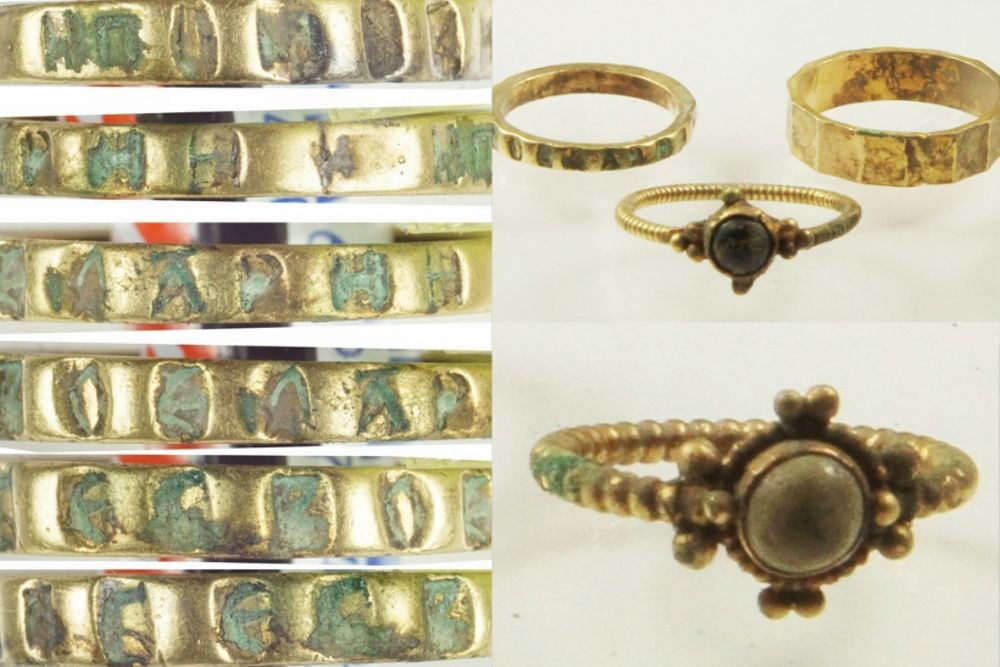An archaeologist has taken Holy Orders to locate a medieval treasure in the Polish countryside.
Dr Adam Kędzierski and colleagues dug up a 12 century ceramic pot containing silver and gold in a village cornfield, after speaking to the local priest.
Thousands of silver coins plus ingots, not to mention a pair of gold wedding rings and 2 bands, were placed inside linen pouches and a basket. That was then sealed in the vessel.
While the upper section isn’t there anymore, the ceramic and its contents are in beautiful condition. 6,500 items are present in total.

Unearthed in Słuszków, Kalisz County, the vessel was “filled to the brim with denarii” said Dr Kędzierski, quoted by The First News.
Coins known as “cross denarii” are “minted with the image of a large cross” and can be traced back “to the end of the 11th century or the beginning of the 12th century” as Live Science puts it. Currency from across Europe had been packed into the pot.
Quoted by Archaeology Wiki, history hunter Dariusz Wyczółkowski said the rings are “probably made using precious stones, polished in a semi-circular way”. He adds they feature decoration “with golden granules.”
He also describes the shape of the rings – the biggest is polygonal with tapering and the other is shaped like a bar and has punched holes.
Dr Kędzierski (Institute of Archaeology and Anthropology of the Polish Academy of Sciences) was in the area late last year on assignment. In true Indiana Jones style, he found out about the medieval stash entirely by chance.
The inquisitive expert was actually investigating a different hoard! Namely a record-breaking find from 1935, long since excavated. However the treasure’s exact location needed to be pinpointed.
In seeking this out, he encountered the Rev Jan Stachowiak while taking pictures. The priest mentioned “rumours he had heard from the pre-war treasure hunters” about another hoard, according to The First News. Armed with a metal detector, Kędzierski spent a couple of days working on the ancient puzzle with guidance from the Reverend.

A place where 3 plots of land converged was said to be the spot. When that proved a dead end, Rev Stachowiak led them to the cornfield near a road. The pot lay nearly 12 inches down. Słuszków’s volunteer fire service were drafted in to keep away thieves!
So, who did this hoard belong to? There are clear signs of a royal connection. As reported by Live Science and others, one ring may indeed rule them all. It bears a Cyrillic inscription reading: “Lord, may you help your servant Maria.”
Cyrillic means the Slavic alphabet. But what of Maria? Experts believe she is none other than a Ruthenian princess, part of Poland’s first ever dynasty the Piasts (930 – 1370). Maria was sister in law to King Bolesław III Wrymouth.
How did it end up underground? A juicy power play is thought to have led to the premature burial, with Poland’s history recording Prince Volodar of Peremyshl’s capture by nobleman Piotr Włostowic… Maria’s husband.

Was this part of a dowry for Maria that somehow found a home in a cornfield? Ultimately experts can’t be sure, but the presence of gold suggests a seriously high status for the owner.
It’s also potentially good news for the village. One major find is impressive enough. But two is surely extra special. The accompanying story gives the situation a regal lustre, as well as revealing the locality’s role in Poland’s ancient past.
All the items are being analyzed so further nuggets of information can be gleaned from the treasure. Kędzierski believes it to be “one of the most intriguing treasures in Poland”, as noted on The First News.
Another Article From Us: Incredible – McDonald’s Opens Restaurant Which Includes an Ancient Roman Road
Sometimes the biggest discoveries are waiting right under someone’s nose. Who knows what other ceramic-encased delights are waiting beneath the soil? Dr Kędzierski went to pot in the best possible sense.
